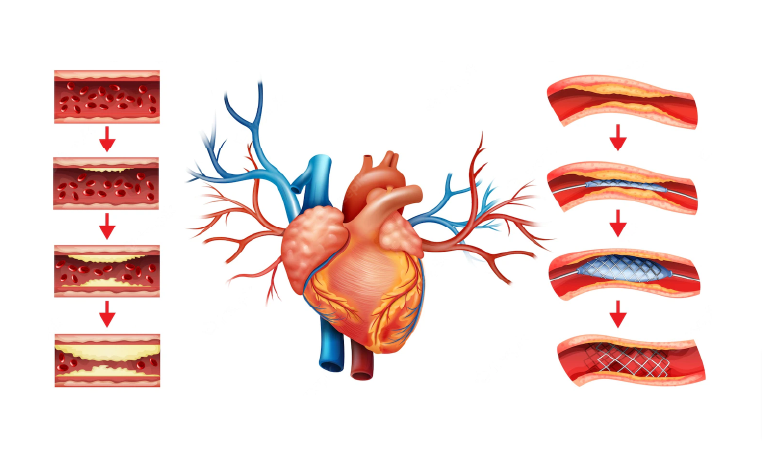Coronary Angioplasty
Coronary angioplasty, also known as percutaneous coronary intervention (PCI), is a medical procedure used to treat narrowed or blocked coronary arteries, which are the blood vessels that supply oxygen and nutrients to the heart muscle. The purpose of coronary angioplasty is to restore blood flow to the heart and improve symptoms such as chest pain (angina) or shortness of breath.
Overview
During coronary angioplasty, a thin, flexible tube called a catheter is inserted into a blood vessel, usually in the leg or arm. The catheter is then advanced to the blocked or narrowed coronary artery, and a small balloon is inflated inside the artery to widen it. The balloon is then deflated and removed, leaving the artery open.
In some cases, a small mesh tube called a stent may be placed in the artery to keep it open. Stents are made of a metal mesh and are coated with a medication that helps prevent scar tissue from forming and re-blocking the artery.
Coronary angioplasty is typically done using local anaesthesia to numb the area where from the hardware including the catheter is inserted and sedation is also used to help the patient relax. The procedure usually takes about an hour to complete, and most people are able to go home the same day.
Coronary angioplasty is usually done to treat narrowed or blocked coronary arteries that are causing symptoms such as angina or shortness of breath. It may also be used to treat a heart attack in progress, or to prevent a heart attack from occurring.
The procedure may be required if the patient’s heart muscle is weak or if the patient has diabetes along with multiple blockages in the arteries.
The doctor can recommend if coronary angioplasty or coronary artery bypass surgery is the better option based on the patient’s overall health and extent of the heart disease.
After the procedure
After coronary angioplasty, it is important to follow the doctor’s instructions for caring for the site where the catheter was inserted and for taking medications as prescribed. You may need to take medications to help prevent blood clots and to lower your risk of heart attack or stroke. You may also need to make lifestyle changes, such as quitting smoking, eating a healthy diet, and exercising regularly.
Most people who have coronary angioplasty experience an improvement in their symptoms, such as reduced chest pain and shortness of breath. However, it is important to note that coronary angioplasty is not a cure for heart disease, and it is important to continue to manage your heart health through lifestyle changes and medical treatment.



